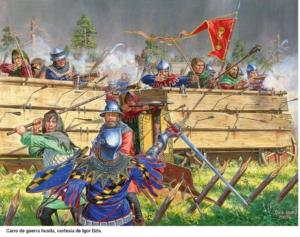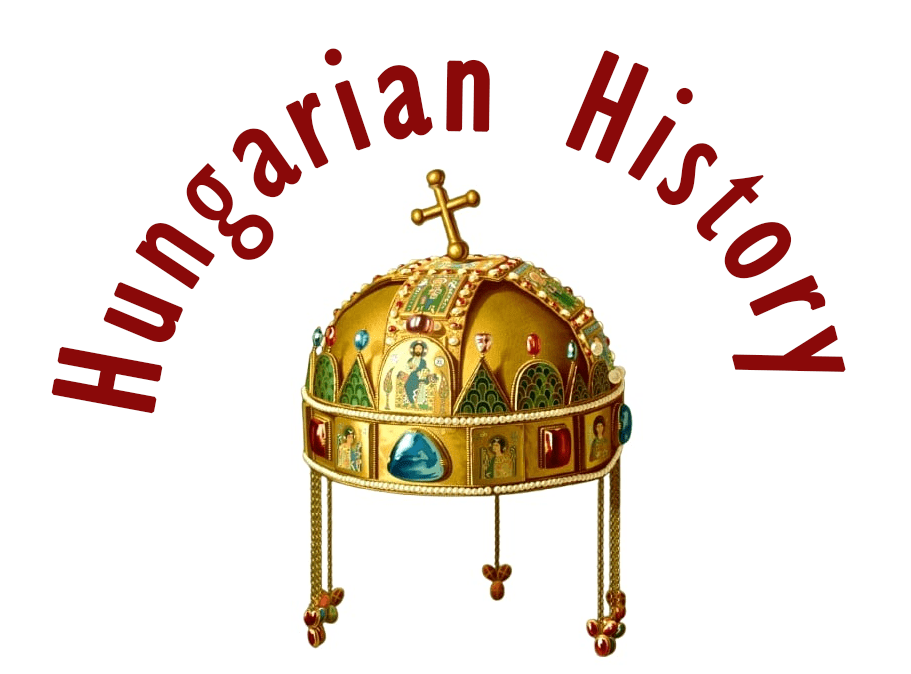The military education of Hunyadi János

Even the enemies of Hunyadi János (1407-1456) agreed that he was one of the greatest military leaders of the 15th century in Europe. Let us now briefly list where he learnt the art of war. Who were his masters?
First of all, we must note that both his physical and mental characteristics enabled him to learn both strategy and martial arts.
We know of his outstanding physical strength, and Bonfini mentions his kind and intelligent qualities, describing him as a patient person who was able to manage the perfect timing of attack and defense alike.
Given this, who were the people who honed his talent?
1. Family traditions and the bodyguards of the king
We know that Vajk (Woyk filii Serbe), Hunyadi’s father, came to Hungary from Wallachia. He appeared in the army of King Zsigmond in 1395 and soon became one of the king’s bodyguards. It was the campaign in which the Hungarian king helped Voivode Mircea to regain his throne against Vlad, who was unfortunately siding with the Turks at the time. (Note that I use the oriental order of names for the Hungarians).
Vajk must have had his military tradition, because his coat of arms was issued in Walachia, among the first Walachian coats of arms. They were not given to anyone who was not a good soldier. Of course, he could not return to Walachia, so he was not rich, but the (already tight-fisted) king gave him lands for his valuable services.
A word about the members of the king’s bodyguard: they were not just simple swordsmen, but it was their job to hire mercenaries on behalf of the king in times of war. Sometimes the bodyguards had their men-at-arms, as we will see in the case of Vajk’s son in the 1430s. It was probably Vajk who introduced his son to the world of fencing.
We do not know how many early fencing skills the child Hunyadi could learn from the Hungarians around him: they had to know the ways of Hungarian fencing. We do know that in 1409 Vajk received the castle of Hunyad in Transylvania, which must have been a perfect place for the young Hunyadi János to learn the ways of soldiers. Let us not forget that he had a brother with whom he could practice.

A note: it has never been entirely ruled out that Hunyadi János was an illegitimate son of King Zsigmond, which would explain much of his rapid career. However, this remains a theory.
2. Learning as a page from an Italian knight
A nobleboy became a page at the age of 8, and at the age of 14, he could become a “military page” according to European customs. Hunyadi János became a page at Ozora Castle and learned from the famous general of King Zsigmond, Pipo of Ozora, alias Filippo di Stephano Scolari. Lord Pipo was one of the founding members of the Order of the Dragon, founded by King Zsigmond in 1408. It would be quite wrong to think that the boy hadn’t been exposed to the Italian style of longsword fighting. If Lord Pipo didn’t know the art of the Fiore dei Liberi, the Italian way of fighting, then who did?

Unfortunately, Lord Pipo, one of the founders of the Order of the Dragon, died in 1426, and the Hunyadi boy had to leave before then.
3. The Serbian school in the court of Despot Stefan Lazarevic
It is known that the Serbian despot Stefan Lazarevics swore allegiance to King Zsigmond in Buda in 1426. Do you remember how formidable the Serbian heavy cavalry was? When they were in the service of the Sultan, they were able to rescue him from immediate danger. Let us not forget that Lazarevics was also a founding member of the Order of the Dragon.

Hunyadi must have learned important lessons there and tested his sword against the raiding enemy in the Borderland. It was at this time that he first encountered the Turks and their ways of war.
When the Despot died in 1427, the young man had to find a new master.
4. In the army of Lord Újlaki László and Csupor Demeter and the King’s court
The young Hunyadi learned contemporary Hungarian tactics from these warlike Hungarian lords. He is mentioned in 1430 without a rank. This changed in 1434 when he became the bodyguard of King Zsigmond. He was mentioned as “aulae nostre miles” (our court soldier). Noble boys were usually knighted at the age of 21. One thing is for sure, he married the Hungarian Szilágyi Erzsébet in 1430, which was not part of his military training but must have given him a greater sense of responsibility.
5. In the court of Prince Filippo Maria Visconti in Milan
Hunyadi was in the entourage of King Zsigmond when he went to Rome in 1431. The king allowed him to stay there from October 1431 to the autumn of 1433. He gained valuable experience in the warfare of the Condottieri. Italian warfare and military tactics were the most developed parts of the military knowledge of the time. Hunyadi grew in skill and wealth and became friends with the Prince.

6. The Hussite warfare, the second most effective military knowledge of the 15th century
In 1434, Hunyadi János went with the king to Basel and Bohemia, where he had plenty of opportunities to learn the ways of the Hussites. The Hussites developed a very effective wagon train tactic: they prepared carts for battle by forming them into squares or circles. The carts were connected by chains from wheel to wheel and positioned at an angle with their corners attached so that horses could be quickly harnessed to them if necessary.

In front of this wall of carts, a trench was dug by the camp followers. The crew of each wagon consisted of 16-22 soldiers: 4-8 crossbowmen, 2 infantrymen, 6-8 soldiers equipped with pikes or flails, 2 shield bearers, and 2 drivers. In the first stage of a battle, the army placed the carts near the enemy army and used artillery fire to provoke the enemy into battle. Then the infantry, hidden behind the wagons, used firearms and crossbows to repel the attack and weaken the enemy.

Once the enemy’s morale was lowered, the second phase, an offensive counterattack, began. The infantry and cavalry burst out from behind the wagons and fiercely attacked the enemy, usually from the flanks. The enemy armies suffered heavy losses and the Hussites soon gained a reputation for not taking prisoners. In Italy, Hunyadi had discovered the importance of sending mercenary units into battle one at a time, but in Bohemia, seeing the disciplined Hussites outsmart even the famous Swiss infantry, he gained more experience.
When King Zsigmond (Sigismund) finally managed to march into the city of Prague in 1436, Hunyadi was in charge of 50 mounted lancers, indicating his advancement among the members of the bodyguard. During the Hussite Wars, the Hussites also raided many neighboring countries in order to weaken them. Hunyadi adapted the same warfare against the Ottomans: he placed the theatre of war on their land, leading smaller or larger raids and campaigns behind the enemy’s border.

Hunyadi and his brother must have received the news of the death of King Zsigmond and the coronation of King Habsburg Albert in the Bohemian lands. We find the Hunyadi brothers in the southern Borderland of Hungary in 1438-39. It is thought that Hunyadi may have been a member of the Order of St George (founded by King Charles of Hungary in 1326) or the Order of the Dragon (1408). Sigismund’s order was particularly inspired by the order of chivalry of King Charles I. The Order of the Dragon included the highest barons but was later expanded. Some say that many of the bodyguards belonged to it.

You can read more about Hunyadi’s first major success in 1439, which was the basis for his sudden rise among the barons of the kingdom:
https://www.hungarianottomanwars.com/1372-1490/hunyadi-at-szendro-1439/
Dear Readers, I can only make this content available through small donations or by selling my books or T-shirts.
If you like my writings, please feel free to support me with a coffee here:
You can check out my books on Amazon or Draft2Digital, they are available in hardcover, paperback, or ebook:
https://www.amazon.com/dp/198020490X
or at https://books2read.com/b/boYd81


My work can also be followed and supported on Patreon: Become a Patron!http://Become a Patron!


https://hungarianottomanwars.myspreadshop.com/all

